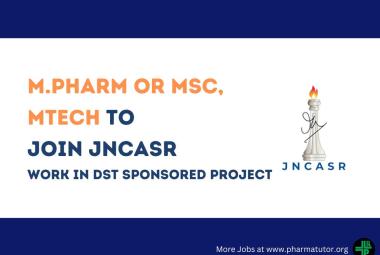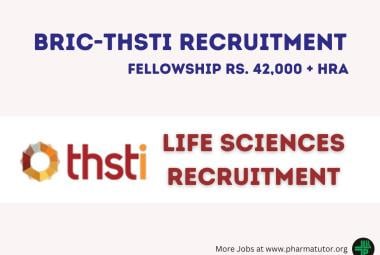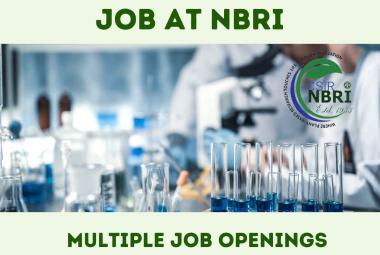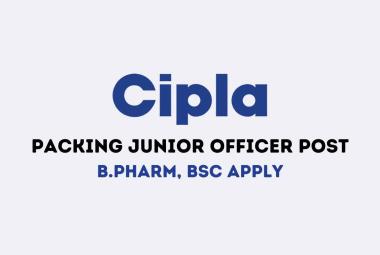About Authors:
Swati Yadav1*, Dr. S.K Prajapati1
1institute of pharmacy,
Bundelkhand University, Jhansi
*swati3231@gmail.com
Abstract:
Sylimarin is obtained from milk thistle (Silybum marianum) plant it is a hepatoprotective drug containing mixture of flavanolignan. The mechanism of action of sylimarin involves different biochemical event as well as it does not only show hepatoprotective action but also antioxidant, anti-lipid peroxidation, anti-fibrotic, anti-inflammatory, immunomodulatory. Major active constituent of sylimarin, silibinin is also known as silybin. Silibin is a mixture of diastereomers, it has hepatoprotective property. Sylimarin lacks good solubility property thus has bioavailability problem, different whacks have been taken to improve solubility of drug. Review delineated with special cogitation towards Chemistry, Pharmacology, safety, therapeutic efficacy and different combination of sylimarin.
Reference Id: PHARMATUTOR-ART-1982
INTRODUCTION:
Silybum marianum (sylimarin) is obtained from the seed and fruit of milk thistle plant, family: asteraceae / compositae. Milk thistle is an annual or biennial plant. It is mainly found in rocky soil, with a height upto 10 feet. Leaves are large, alternative and prickly- edged. Flower is found at the bottom of the stem. Flower is composed of tubular purple flower covered with coriaceous bracts and ending is sharp spins. Fruit is achenium type which is glossy brown or grey with spot, size about 7mm. Seed found within fruit. leaves consist of vein containing ,sap which is milky in colour, thus it is known as milk thistle. Sylimarin antioxidant property is by mixture of at least 4 closely related flavanolignans, 60-70% of which is a mixture of 2 diastereomer of silybin.6 In 1960s structure of constituent was clarified.5
CHEMISTRY:
Sylimarin are heterodimer of flavonoid (benzo gamma-pyrones) bound to ligands. Empirical formula C22H22O11 and mol.wt 482.44 g/mol.4 Sylimarin differ from other flavonoid by having coniferyl alcohol group substituted at its isomer5. Sylibin is active component of all about 60-70% followed by isosylibin (5%), silydanin (10%), silycristin (20%). Betaine, trimethylglycine and essential fatty acid were also found in seed.6
PHARMACOKINETIC:
Sylimarin found to have poor solubility in water, thus lower bioavalibility demand for the development of formulation enhancing its solubility by encapsulating, sugar coating, beta cyclodextrine inclusion complexation, self- micro emulsifying etc. Silipide (trade name siliphos), is sylimarin and phosphatadylcholine (lecithin) complex was about 10 times more bioavalible than sylimarin.4 Oral absorption is rather low, recovery 2 to 3 % from bile in a rat. In 4 to 6 hour s peak plasma concentration is achived. Sylimarin is mainly excreted in bile as sulphated and glucuronide conjugates in amount of 80% of the total dose administered very small amount is eliminated from urine5.
TOXICITY3,2:
Intravenous infusion in rat, rabbit and dogs shows acute toxicity of sylimarin 50% of LD50 values are 140 mg/kg rabbit and dogs, 385 mg/kg in rats and 400 mg/kg in mice variation may occur according to rate of infusion. Tolerance is higher upto 10g/kg after oral administration for slow infusion over 2 to 3 hours the LD50 was 2gm/kg in rats and after oral administration it was 10g/Kg. Sylimarin is devoid of embryotoxic potential5.
PHARMACODYNAMIC5, 6:
Antioxidant properties:
Dehydrosuccinate sodium salt of silibinin is a strong inhibitor of the oxidation of linoleic and water emulsion catalysed by Fe2+ salts. It interacts with cell membrane to prevent abnormalities, in lipid content for maintaining normal fluidity. It also inhibits microsomal peroxidation by NADPH-Fe2+-ADH one of the system responsible for hydroxyl radicals.
Lipid peroxidation:
When unsaturated fatty acids in lipids interact with free radical result in peroxidation, this result in alteration, degeneration of cell membrane may leads to disorder of lipoprotein metabolism in liver and peripheral tissue, where sylimarin acts as scavenger of free radical. Component of sylimarin inhibit linoleic acid peroxidation catalysed by lipoxygenase. Sylimarin protect liver mitochondriaand microsomes against lipid peroxidation.
Anti fibrotic effect:
Stellate hepatocytes responsible for fibrogenesis proliferate and transform into myofibroblast responsible for collagen fibre deposition in the liver. Recent effects of silibinin on the transformation of stellate cell into myofibroblast have been demonstrated. Silibilin at a concentration of 100µmol/L reduce proliferation of stellate cells; when examined in isolated fresh liver of rats about 75% of reduction in cell conversion into myofibroblast.
Inhibition of cytochrome P-450:
Hepatic cytochrome P-450 (CYP) detoxification system (Phase I metabolism) can be inhibited by sylimarin. Some of researcher did not detect any effect of sylimarin on CYP system.
Amanita mushroom poisoning:
Amantia genus cyclopeptides fungi include amatoxins and fallotoxins are captured by hepatocytes through the sinusoidal system. It also mediate uptake of billary salts by liver. Silibilin is found to inhibit amanitin uptake in isolated preparation of hepatocyte membrane. TNF-αfound to cause hepatic injury, induced by α-amaniti. Whereas, Silibin prevent the effect of TNF-α.
Anti-inflammatory and anticarcinogenic:
Sylimarin, shows anti-inflamatory effect in liver tissue. Marked inhibition of leukotrine synthesis and formation of prostsglandin, inhibition of kupffer cells, inhibition of neutrophil migration are some effect shown by sylimarin. In various experimental sylimarin protections against carcinogenic agent have been studied. In all stage nonmelanoma skin cancer produced by UVB radiation, such as its initiation promotion and complete carcinogenesis. When sylimarin is applied in different dose appears to reduce the multiplicity, incidence and volume of tumour per animal. Experiment done on nude mice showed that sylimarin reduce apoplosis skin oedema, depletion of catalase activity and induction of cyclo-oxygenase and ornithine decarboxylase. Anti-inflamatory and anticarcinogenic on the molecular base are still not known , it may be related to the inhibition of the transcription factor NF-?b, responsible for regulation of various gene expression invoved in inflammatory process,in cytoprotection and carcinogenesis.
Mechanism of action1
Silymarin’s hepatoprotective action is due to following mechanisms. These includes
- Activity against lipid peroxidation as a result of free radical scavenging and the ability to increase the cellular content of GSH
- Inhibition of the transformation of stellate hepatocytes into myofibroblasts, which are responsible for the deposition of collagen fibres leading to cirrhosis.
- Ability to regulate membrane permeability and to increase membrane stability in the presence of xenobiotic damage; capacity to regulate nuclear expression by means of asteroid-like effect.
- Stimulation of ribosomal RNA polymerase and subsequent protein synthesis, leading to enhanced hepatocyte regeneration.
- Enhanced glucoronidation and protection from glutathione depletion.
- Immunomodulatory effects on diseased liver.
Table 1: Different marketed combination of sylimarin and dosage forms3
|
s.no |
BRAND |
COMBINATION |
COMPANY NAME |
DOSAGE FORM |
|
1 |
Hepalee |
Silymarin, L-Ornithine L-Aspartate |
Leemed Pharma |
Syrup |
|
2 |
Silytop (220ml) |
Silymarin, Lecithin |
Prism Pharma |
Syrup |
|
3 |
Eliv syrup |
Silymarin, Lecithin |
Ravian Pharmaceuticals (P) Ltd. |
Syrup |
|
4 |
Alovin
|
Silymarin, Lecithin |
Bennet Pharmaceuticals Ltd |
Capsule |
|
5 |
Askaliv
|
Silymarin, Calcium Pantothenate,L-Ornithine Aspartate, Niacinamide, Vit B1,Vit B12,Vit B2,Vit B6 |
Asklepios Remedies (P) Ltd. |
Capsule |
|
6 |
Livosure |
silymarin, Choline Bitartrate,Lecithin |
Bionova Lifesciences (Pragati Biocare Pvt Ltd) |
Capsule |
|
7 |
Arosi |
Silymarin, L-ornithine-L-Aspartate |
Arvincare |
Tablet |
|
8 |
Hepanit |
Silymarin, L-ornithine-L-Aspartate
|
Mac Organics |
Tablet |
|
9 |
Nitoliv |
Silymarin, L-ornithine-L-Aspartate |
Biomax Biotechnics |
Tablet |
|
10 |
Lecivit-S |
Silymarin, Lecithin |
Lifeline Biotech Ltd. |
Suspension |
|
11 |
Scav-L |
Silymarin, D-Panthenol, Niacinamide, Pyridoxine, Riboflavin, Thiamine, Vit B13 |
D.S. Lab |
Suspension |
|
12 |
Speedoliv |
Silymarin, L-Ornithine |
Royal Sapphire Remedies |
Suspension |
|
13 |
Askaliv (35gm) |
Silymarin, Calcium Pantothenate,Glucose,L-ornithine-L-Aspartate, Niacinamide, Sucrose, Vit B1,Vit B12,Vit B2,Vit B6 |
Asklepios Remedies (P) Ltd. |
Sachet |
Table 2: Bioavailability enhancement whacks
|
S.no |
Researcher |
Formulation modification |
Achievements |
|
1 |
Soo woo j. et al13 |
Self-micro emulsifying |
The % release of sylimarin after 6hr was 2.5 times higher and bioavailability found to be 3.6 times higher. |
|
2 |
Garg .R et al17 |
Floating effervescent tablet |
Prolonged drug release for at least 24hr, improving bioavailability. |
|
3 |
Nakhat P D et al14 |
HP-β-CDsolid dispersion tablet |
Improved dissolution, promoting oral bioavailability stability at varying temperature and relative humidity. |
|
4 |
Qiu ming feng et al15 |
Solid dispersion “dripping pills” |
Dissolution rate (T50) of sylimarin was found to be higher by a factor of 7.5-11 than those of film-coated tablet, sugar coated tablet and capsule |
|
5 |
Yanyu et al16 |
Proliposome |
Dissolution was more; encapsulation efficiency was more than 90% stability for 3 month at 40ºc. |
|
6 |
Arcari et al11 |
β-CD molecular inclusion complex |
Increase of 20 % dissolution, inclusion increase bioavailability of silybin. |
|
7 |
El-Samaligy et al10 |
Hybrid liposomes |
Results in SGPT reduction( induced by carbon tetra chloride), P<0.001 compared to suspension |
|
8 |
Wu et al |
Lipid based SMEDDS |
The relative bioavailability was enhanced by an average of 1.88 fold, for sylimarin PEG 400 upto 48.82 fold. |
Reference
1. Ghosh A, ghosh T and jain S silymarin-a review on the pharmacodynamics and Bioavailability enhancement approaches journal of pharmaceutical science and technology vol. 2 (10), 2010,348-355.
2. Nitin dixit, Sanjula Baboota, Kanchan Kohli, S Ahamad, Javed Ali, sylimarin: A review of pharmacological aspect and bioavailability enhancement approaches Indian J pharmacol 2007.
3. Generic Drug Sylimarin Combination, Explore medicine, medindia drug database
4. Silibin, Wikipedia
5. F. Fraschini, G. Demartini, D. Esposti, Pharmacology of Silymarin Clin Drug Invest 22(1):51-65, 2002. © 2002 Adis International Limited.
6. Silybum Marianum (Milk thistle) monograph, throne research
7. Wellington K, Jarvis B Silymarin: a review of its clinical properties in the management of hepatic disorders. Adis International Limited, Auckland, New Zealand. Bio drug 2001; 15(7):465-89.
8. CIMS-Sylimarin drug inforrmation
9. Valenzuela A, Garrido A. Biochemical bases of the pharmacological action of the flavonoid silymarin and of its structural isomer silibinin. Biol Res 1994; 27: 105-12
10. El-Bahay C, Gerber E, Horbach M, et al. Influence of tumor necrosis factor- and silibin on the cytotoxic action of amanitin in rat hepatocyte culture. Toxicol Appl Pharmacol 1999; 158: 253-60
11. M. Arcari, A. Brambilla, A. Brandt, R. Caponi, G. Corsi, M. Rella, et al. A new inclusion complex of silybinin and beta-cyclodextrin: in vitro dissolution Kinetics and in vivo absorption in comparison with traditional formulations, Boll Chim Farm 131: 205- 09 (1992).
12. Sonia Abrol, Aman Trehan and Om Parkash Katare. Comparative Study of Different Silymarin Formulations: Formulation, Characterisation and In Vitro/In Vivo Evaluation, Current Drug Delivery 2: 45-51(2005).
13. Soo Woo Jong, Tae-Seo Kim, Jae-Hyun Park, and Sang-Cheol Chi. Formulation and Biopharmaceutical Evaluation of Silymarin Using SMEDDS, Arch Pharm Res 30(1): 82- 89 (2007).
14. P. D. Nakhat, R.A. Naidu, I. B. Babla, S. Khan, and P.G. Yeole. Design and evaluation of silymarin-HP-β-CD Solid dispersion Tablets, Indian j Pharm Sci 69(2): 287-89 (2007).
15. Ming-feng Qiu, Wei Jia , Shao-shun Li, Zhaohui Xu, Xia Sun, Xiao-rong Wang, Yongyu Zhang and Guo-xiang Xie. A new silymarin preparation based on solid dispersion technique, Advances in therapy 22: 595-600 (2005).
16. X. Yan-yu, S. Yun-mei, C. Zhi-peng, and P. Qineng. Preparation of silymarin proliposomes: A new way to increases oral bioavailability of silymarin in beagle dogs, Int J Pharm 319: 162-68 (2006).37.
17. R. Garg and G. D. Gupta. Preparation and Evaluation of Gastroretentive FloatingTablets of Silymarin, Chem. Pharm. Bull 57(6): 545-549 (2009).
NOW YOU CAN ALSO PUBLISH YOUR ARTICLE ONLINE.
SUBMIT YOUR ARTICLE/PROJECT AT articles@pharmatutor.org
Subscribe to Pharmatutor Alerts by Email
FIND OUT MORE ARTICLES AT OUR DATABASE










.png)


